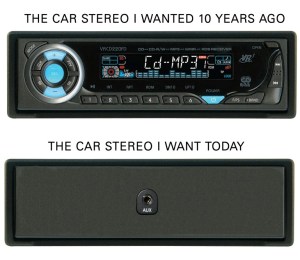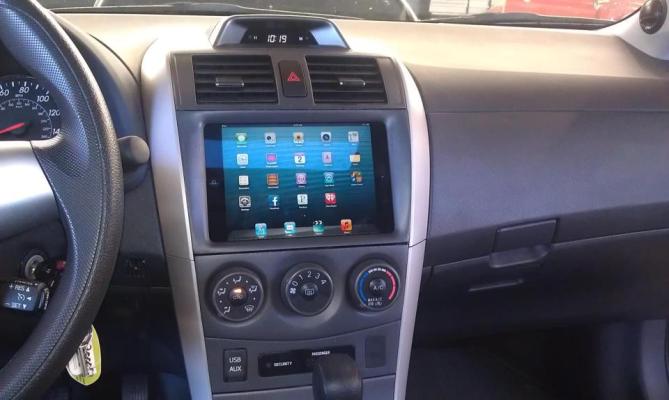I’m shopping for a car right now. Just something that can handle a little city driving and frequent trips to the cottage in the warmer months, with the ability to haul a decent amount of cargo. I’m weighing factors like size, fuel economy, engine power, cargo space and FWD vs. AWD, but for my purposes most of those points are relatively moot; I really just need something to get me from A to B. But I find myself more concerned with the in-car entertainment system, and how it works with my mobile device of choice.
I’m far from a car buff, so my priorities might not line up with those of actual automotive enthusiasts, but my smartphone is no less important to me on the road as off. In fact, in many ways it’s more important in a vehicle I’ll be using mostly for long highway drives and the occasional commute caught in traffic. From experience with Zipcar and rentals, I know that the difference between a car that plays nice with my iPhone versus one that doesn’t can mean the difference between a pleasant trip that leaves me feeling rested and relaxed, and a frustrating journey that just ends up fraying my nerves.
Here’s what I want from an in-car entertainment system in terms of how it handles a smartphone connection, in both an incarnation that should be fully possible given today’s technology, and one that’s maybe less realistic but more ideal:
- Option 1: A Bluetooth or hardwired connection that recognizes that at this stage in the game, there are many more ways to get audio on an Android or iOS-based device than via a locally stored library, and is prepared to handle that. So no confusion when my iPhone is using iTunes Match, Rdio or Spotify instead of a local library; retain the ability to change tracks, recognize metadata for all content, and handle functions like skipping tracks without erratic behavior. I’m fine with an in-car system leaving the heavy lifting to my smartphone of choice and acting mostly as a dumb pipe, but at this stage in the game, we don’t have to be more-frustrating-than-a-simple-aux-connection dumb.
- Option 2: Custom, target-OS based systems that aren’t car manufacturers-specific, but cater instead to the two dominant mobile operating systems, Android and iOS. This would essentially involve Apple and Google coming in and saying, forget SYNC, forget QNX, forget whatever else you’re doing, let’s put iOS or Android in cars for a perfectly seamless experience with a user’s existing device, apps and services. As far as I’m concerned SYNC and other manufacturer-proprietary systems are little better than heavy-handed, often confusing chromes layered on top of functionality that mobile OSes already do perfectly well on their own. Just throw an iPad mini in the dash.

(via Reddit)
Car makers are taking steps in the latter direction, with Siri integration coming to cars from a number of manufacturers including GM, Honda, Audi and more. But this is still taking the form of integrations with existing systems like Chevy’s MyLink, which in my opinion are about as friendly and necessary as overwrought manufacturer skins plopped unceremoniously on top of stock Android.
Cars that run Android were among the trends spotted at CES this year, but companies have been demoing in-vehicle Android for a while now. The problem is that you often won’t recognize it. What car manufacturers need to realize is that mobile tech has answered a lot of the same problems they have when it comes to navigation apps, in-car entertainments and utility software in ways that don’t require much rethinking or translation. Taking steps to minimize driver distraction is obviously one thing, but from my experience with SYNC and the rest, that hardly ends up being a core focus on most car-focused interface-design choices, so it’s a thin argument for sticking with the existing direction most are headed in.
A user’s mobile device affects more and more of their lifestyle choices, resulting in the rich ecosystems we see out there today for accessories and appliances that are compatible with iOS and Android. Car makers need to realize this isn’t just a nice-to-have for consumers going forward, but an actual top-tier priority. In other words, the first person to build me a car that replaces the dash entertainment system outright with an iPad (as a standard, factory-installed option) wins.
